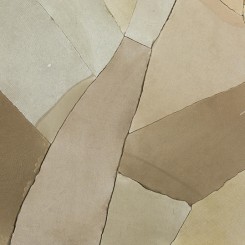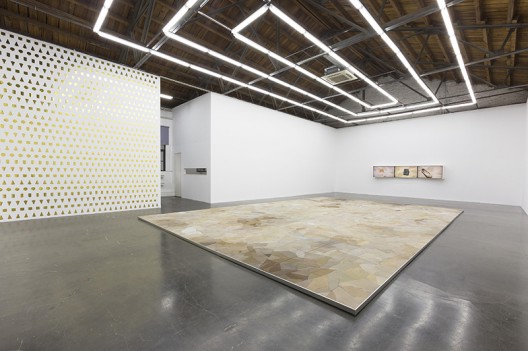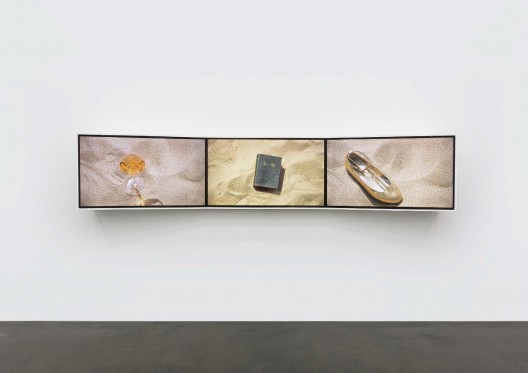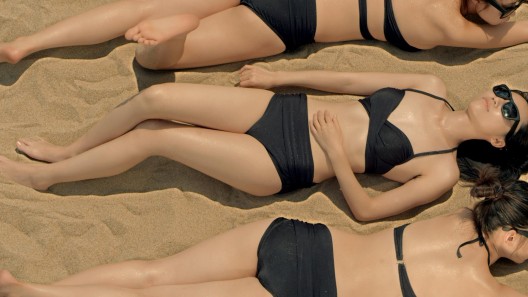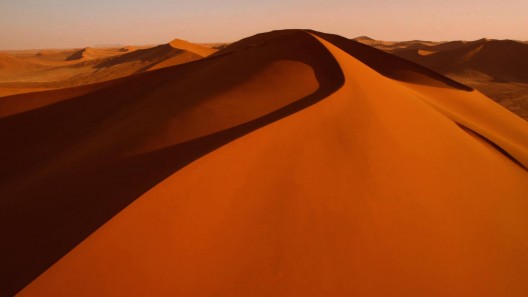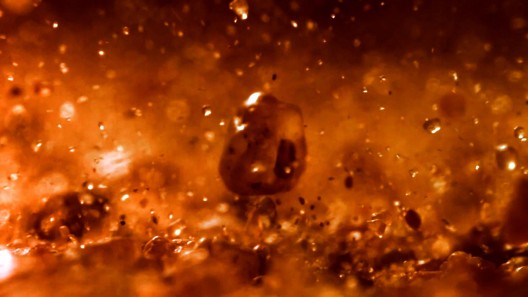Text by Huang Bihe
Beijing Commune (798 Art District 4 Jiuxianqiao Road Chaoyang District Beijing 100015), Jun 15—Aug 6, 2016
A fairytale wonderland is not only the exuberant paradise that children imagine, but also a utopia that adults under heavy worldly burdens might aspire to reach. Over one hundred years ago, one of the all-time literary classics by English writer Lewis Carroll, Alice in Wonderland, was adapted into different formats by the American Walt Disney Company; today, it remains a bottomless source of inspiration for popular fantasy culture. The huge Wonderland Amusement Park in Changping, Beijing, which stands unfinised and abandoned, epitomises theme park construction projects that sprang up in haste all over the country at the beginning of the 1990s, when leisure and recreation began gaining popularity among the salariat.
The artwork bearing the same name, “Wonderland” (2016), features a rectangle formed with shattered pieces of concrete blocks wrapped in nylon stockings resembling the map of an unknown country, and takes up nearly the entire floor of the main exhibition space inside Beijing Commune. The concrete pieces of various sizes easily take one back to Beijing in the 1990s—an environment under constant demolition and construction. Modeling the architecture after European castles, such as was projected for the Wonderland Amusement Park, was in vogue for a while. This not only answered demand among the city’s increasingly better-off residents to consume more advanced cultural codes, but also signaled the expansion of urban desire and imagination. As for the nylon stockings that were popular in the 1980s and 1990s, their color looks rather dull for today’s taste, and their material ill-equipped to highlight the beauty of curvy female legs. And yet, at the early stage of the reform era, these garments epitomized trend-chasing women’s cautious quest for their long-concealed physical attributes. The innovations in fashion that came with political loosening and liberation of the mind signified the liberation and rediscovery of the body. The texture of nylon tightly wrapped around the skin, when compared with the monotonous dungarees and polyester that came before, was an easier locus for storing private memories of the female body. This was before the fairy tales of pleasant sensation created by advertising and vogue engulfed everything—the body that had been newly returned to women was still a new mine yet to be explored—a brand new wonderland in itself.
In the three-channel video piece “Avatar” (2015), the camera in fluid motion shows the glowing and immaculate skin of a girl in a bikini from multiple angles; at first glance, this looks like a segment from a advertisement for sunscreen. What makes it different is an image of the sky—high and far off—which jumps into the scene from time to time and distracts the viewer from gazing attentively at the woman’s healthy and beautiful body; a buzzing sound from insects rubbing their wings together runs through the entire piece, suggesting some sort of anxiety and stress. A Bible in the woman’s hand, its pages turned by the wind, takes one back to the conflict between spirit and flesh that pervades Western history. The human body, which once was the source of the sharpest ideological contradiction, has ironically been sacralized today after being successfully secularized in the struggle to sabotage spiritualism. The lonely and deep road to the spirit has now been superseded by intricate exploration of the landscape of the body. The body replaces the spirit and its redemptive potential, and acts as a contemporary Avatar. The woman’s lustrous skin is like rolling mountains enveloped in a sacred halo—a tactile wonderland for modern times. The bird’s eye panoramic view at the end again serves as a reminder that the exotic beach presented earlier in fact originates from a scene set up on a truck dashing along a dead-straight suburban freeway. Thus, the viewers’ floating thoughts are thrust back into reality, while at the same time the speeding truck carrying a Bible, Buddhist prayer beads, and golden shoes, seems to carry one’s aspirations to the next unknown wonderland.
It seems a clue is provided in another video work, “Mars” (2016). In it, rootless sand dunes being moved by the wind are even, indifferent, and desolate. Is this post-Armageddon Earth? Or Mars—the new frontier of human habitat awaiting exploration? French philosopher Jean Baudrillard, in “Desert For Ever”, the last chapter of his travelogue America, describes the great deserts across Middle Western America this: “Why are the deserts so fascinating? It is because you are delivered from all depth there—a brilliant, mobile, superficial neutrality, a challenge to meaning and profundity, a challenge to nature and culture, an outer hyperspace, with no origin, no reference-points.” America, viewed by Baudrillard as the ultimate form of human society and is “utopia achieved”, possesses the typical characteristics of the great deserts: dreary, inhumane, full of fantasies. Therefore, the hyperspatial desert is the city that has erased its memories entirely, is the body devoid of the soul, and is the ultimate wonderland of mankind.
In the exhibition’s last artwork, the artist covers the whole of the left-hand wall of the exhibition hall with paper baking cups. This piece, entitled “Medal” (2016), has a playfulness which is distinct from the other three; the neat layout of the “medal” formation is also in sharp contrast with the myriad colors and crisscross pattern in “Wonderland” (2016). Nevertheless, “Medal” represents an extension of certain characteristics in Ma Qiusha’s earlier works, such as detailed handiwork, and preserves her dream of being as light-footed as the maiden Alice while at the same time tearing apart the starkness of reality, and just like the princess in “Snow White” (2009) who still dances to children’s songs despite being covered by a layer of moldy breadcrumbs. Such is the overt or covert wonderland inside the heart of every person, perhaps.
